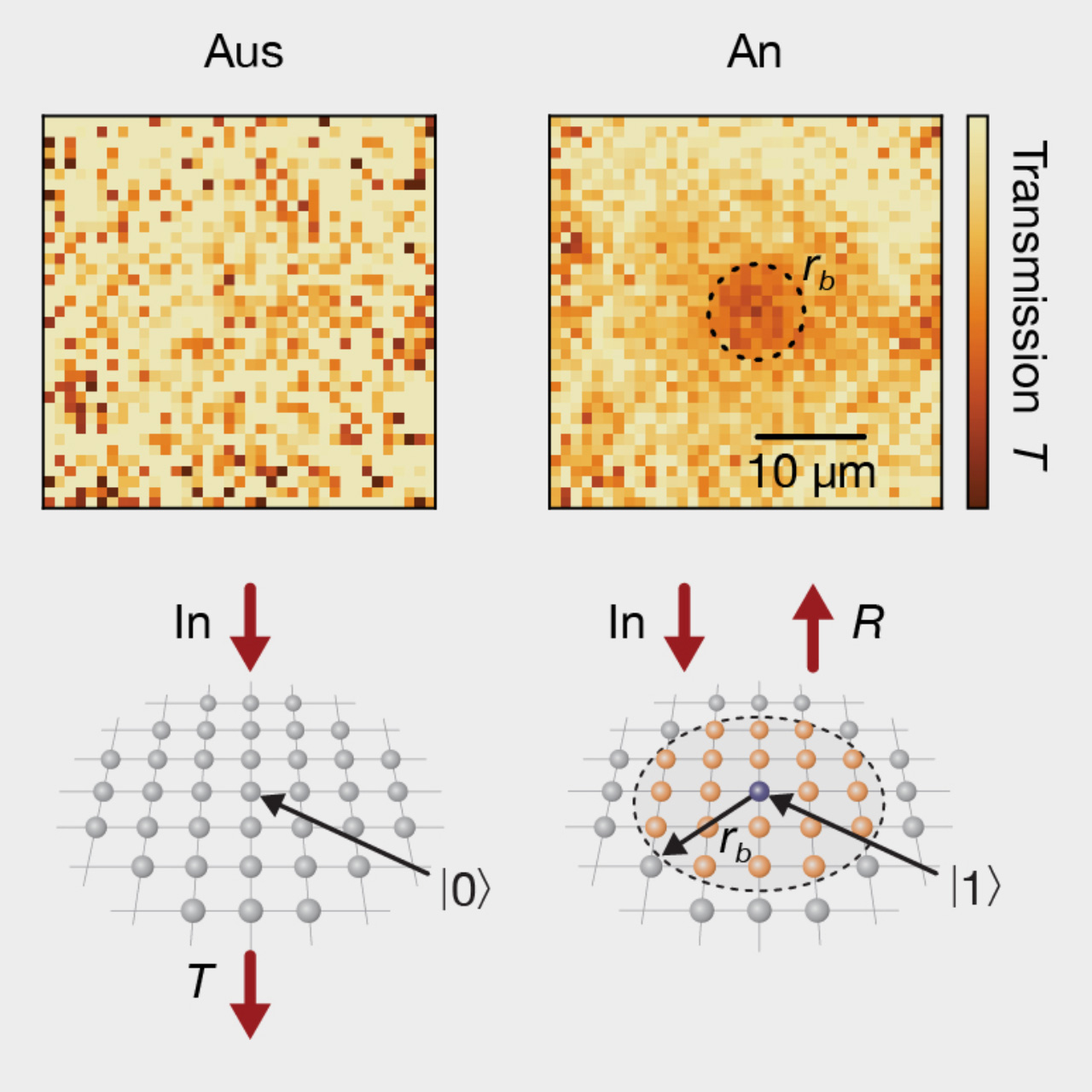
Using a single atom as a quantum switch
This optical mirror shares many features of its classical analogue. Most notably, the reflection probability is fixed and cannot be controlled. However, analogous to the switch on a coffee machine that can be turned on (“1”) or off (“0”), the scientists have now engineered a switch that allows to change the optical properties of the metamaterial from reflective to transparent on demand. In the classical world, this would correspond to a window that suddenly turns into a perfect mirror with the flip of a switch.

Flipping the switch changes the optical properties. On the left, the optical mirror is tuned to the “off” state, with the atomic array being transparent (T). On the right, the optical mirror is turned “on” and reflects the incoming photons (R), as indicated by the orange-coloured circle in the upper image. Image: Kritsna Srakaew et al.
More specifically, the authors devised a switch consisting of a single atom – the smallest possible solid switch. This switch is placed at the very centre of the optical mirror, the ordered array of atoms. Its mechanism hinges on the atom’s energy state, which can be manipulated using laser light. Depending on the energy state, the optical mirror will then be reflective or transparent like a window. “The results are very exciting for us. Guiding single photons is a challenging task, which is typically accompanied with losses or strong geometric restrictions. Atomic arrays have the potential to address both challenges”, says Pascal Weckesser, postdoctoral researcher and second author. He further adds: “It is fascinating to switch single photons by either sending them one way or the other, especially as we only manipulate a single atom to do so.”
In addition, the researchers’ work explores some key quantum characteristics. In their experiment, the switch cannot only be prepared in the two limiting settings “0” and “1”, but more importantly, it can be tuned to an in-between state. This quantum feature therefore allows settings that have no classical analogue, such as a mirror, which is both reflecting and transmitting at the same time.









